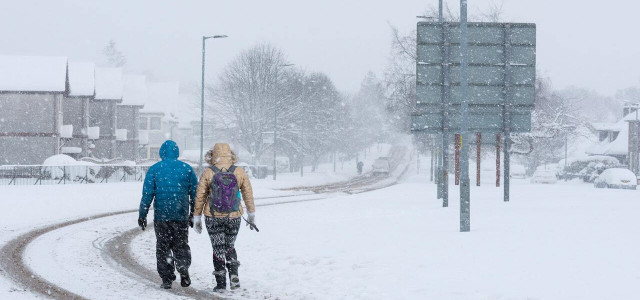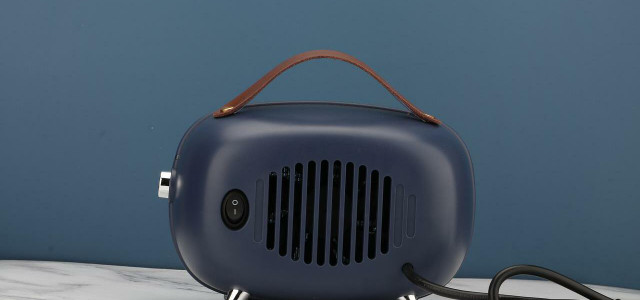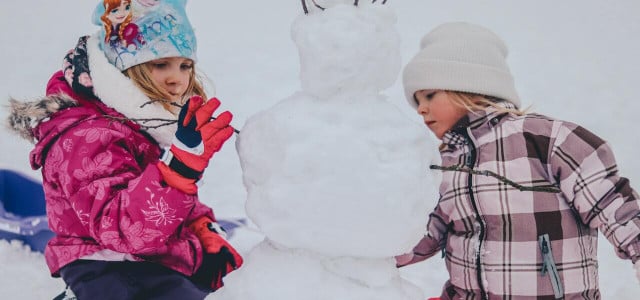With colder weather on its way, it’s important to know how to handle yourself properly. Learn some valuable winter safety tips to help get you through until spring.
Winter is just around the corner. Outdoor enthusiasts can’t wait to get out and enjoy winter hiking or running in the snow, while others look forward to curling up with homemade hot cocoa and a good book. Whether you enjoy the season or not, winter is coming.
While it may be cold and icy, it doesn’t have to be dangerous. With these winter safety tips, you can enjoy the season both indoors and out.
1. Ensure Your Home is Winter Ready

Your home is where you go to escape the colder temperatures, so it’s important to ensure that it’s ready for winter. This includes testing all smoke detectors to make sure they’re working and ensuring you have a working carbon monoxide alarm on each floor of your home. Stock your pantry and freezer in case a big winter storm hits and you can’t get to the stores.
When it comes to heating your home, there are a few other winter safety tips you should keep in mind. If using space heaters, be sure to give them plenty of space. For those who prefer to light a fire or use candles to create a cozy atmosphere, remember to never leave an open flame unattended. There are many home heating mistakes you can make, but don’t let them compromise your safety.
2. Prepare Your Car for Winter


It is estimated that 95% of American households own a car. Prepare your vehicle for the colder months with these important winter safety tips:
- Change your tires to winter tires if you live somewhere that gets a lot of snow. All-season tires don’t have the same traction but are more affordable and don’t require additional storage space.
- Don’t let your gas tank get too empty; otherwise, ice can build up within the tank.
- Keep an emergency kit in your car with items like water, snacks, a first-aid kit, blankets, a flashlight, extra batteries, a portable phone charger, and emergency flares.
- Top up your coolant with antifreeze to help your car maintain a consistent operating temperature.
3. Winter Driving Safety Tips


Driving safely is important at any time of year, but winter driving brings with it its own set of challenges. Use the following winter driving safety tips to ensure a safe journey:
- Avoid the use of cruise control.
- Accelerate and decelerate slowly.
- Steer into a skid and not against it.
- Avoid driving in conditions with poor visibility.
- Keep extra distance between yourself and the car in front of you.
4. Wear the Right Gear


Wearing the right clothing is critical during the winter. Without proper clothing, you expose yourself to a wide variety of risks. Choosing the right boots will help give you traction and keep your feet warm, while good gloves (and homemade hand warmers) will help keep your hands toasty. The best way to prepare for any outdoor activity is to use layering to achieve better insulation:
- The first layer of clothing should be made of a material that helps keep you dry.
- The second layer is worn on top and should be made of wool or fleece to provide insulation.
- The third layer should be windproof and waterproof.
It’s also important to note that if your clothing becomes wet, you should remove it— this is where layers come in handy. Wearing wet clothing outdoors in cold temperatures opens you up to a risk of frostbite. You should also be sure to wear a hat and scarf, as most heat is lost through the head.
5. Treat Frostbite Immediately


Frostbite occurs when your skin is exposed to freezing temperatures and the skin tissue is damaged as a result. When left untreated, it has the potential to be a serious condition. This is another reason why wearing the right clothing in winter is crucial.
Frostbite can happen in as little as 5 minutes in frigid weather, but it doesn’t need to be extremely cold for you to be at risk. It can happen at any temperature below 31°F. If your skin turns a white or yellow color and starts to itch, sting, burn, or you get the feeling of pins and needles, you’re in the early stages of frostbite. The best thing to do is to get inside and soak your body in warm water (104-107°F) for at least 30 minutes.
If your skin changes color or becomes hard, remains numb, starts to blister, or you are in severe pain, head to your nearest emergency room for proper medical care.
6. Prevent Falls


Falls are the leading cause of non-fatal injuries in the United States, and outdoor falls are very common during the winter season. To avoid injury this year, keep the following winter safety tips in mind:
- Don’t rush – give yourself plenty of time to arrive at your destination.
- Keep your hands free to help maintain balance.
- Walk like a penguin to avoid slipping.
- Keep sidewalks and driveways clear of snow and ice.
7. Check Weather Reports


Keeping yourself informed of the weather is one of the best winter safety tips out there. Knowing the conditions you’re dealing with enables you to make informed decisions about your plans for the day. Severe winter weather can appear at any time and can be very dangerous. Check the NOAA‘s winter weather forecast regularly.
8. Pedestrian Winter Safety Tips


Walking around a city in the winter months can be a bit risky. In order to make walking convenient, comfortable, and safe, take the following key winter safety tips for pedestrians into consideration:
- Be aware of your surroundings. Hoods, scarves, hats, and umbrellas have the ability to block our vision.
- Wear bright and reflective clothing, particularly at night or during periods of poor visibility. If you have a pet, ensure they also are wearing some sort of reflective gear.
- Don’t text while walking – pay attention to those around you.
- Always make eye contact with cyclists, or anyone driving a bus or car before crossing the road. Due to slippery conditions, they may not have the ability to stop.
Read more:
- 3 Mouthwatering Acorn Recipes for Winter Foragers
- Checklist: How to Prepare Your Garden for Winter
- Natural Home Remedies for Colds: 7 Easy Recipes
Important Information regarding Health-related Topics.
** Links to retailers marked with ** or underlined orange are partially partner links: If you buy here, you actively support Utopia.org, because we will receive a small part of the sales proceeds. More info.Do you like this post?










